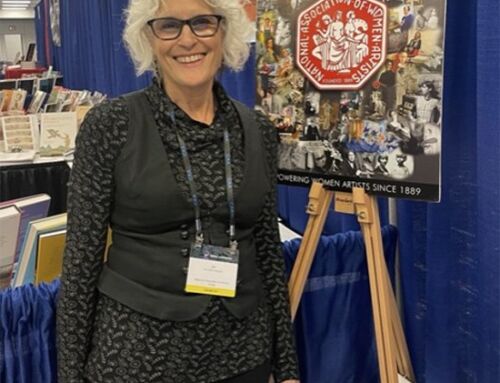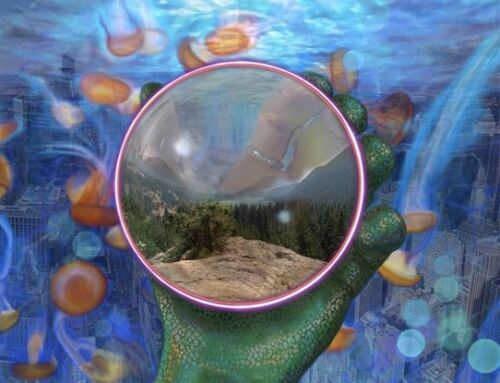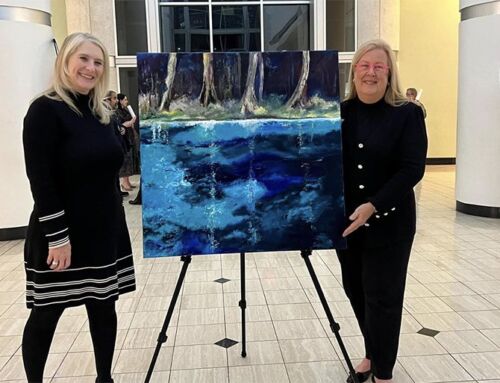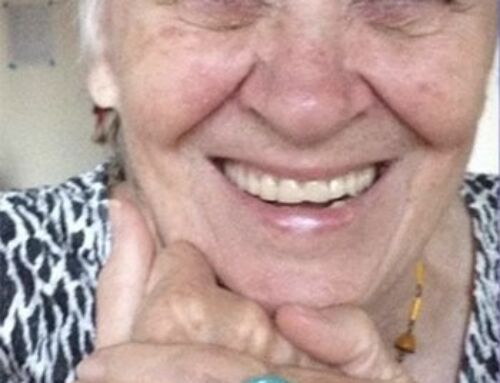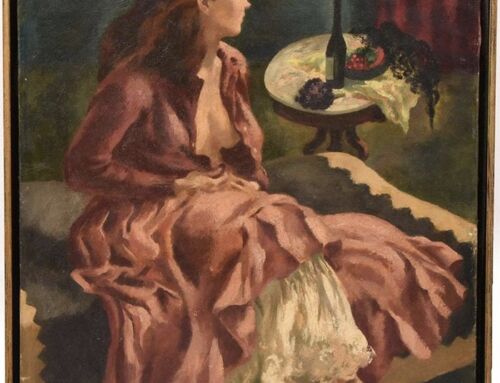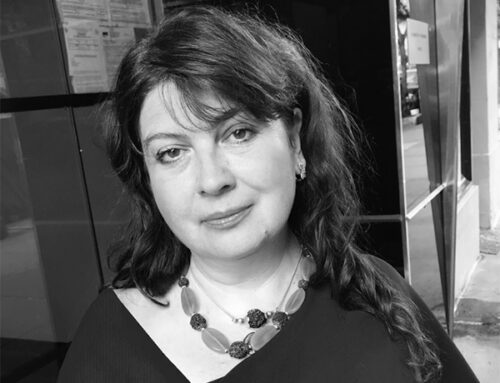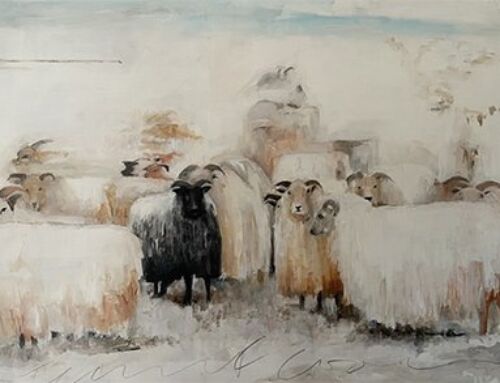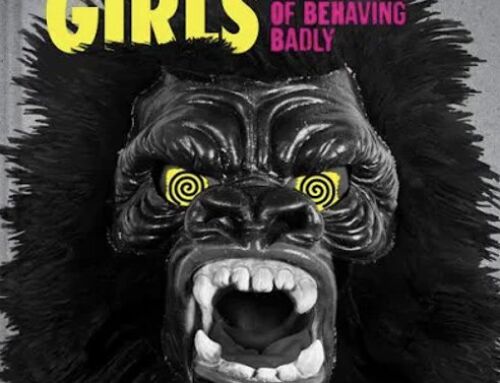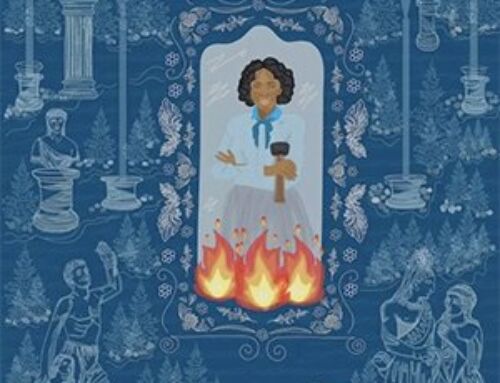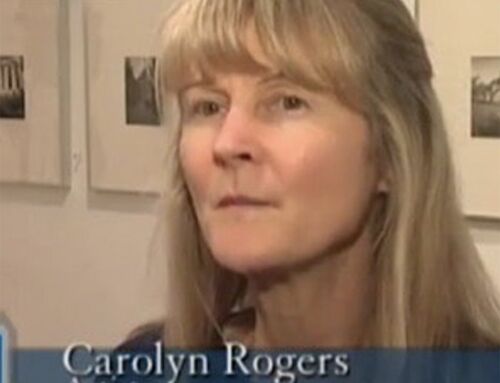JUDY CHICAGO:
Herstory at NYC’s New Museum
By Sandra Bertrand
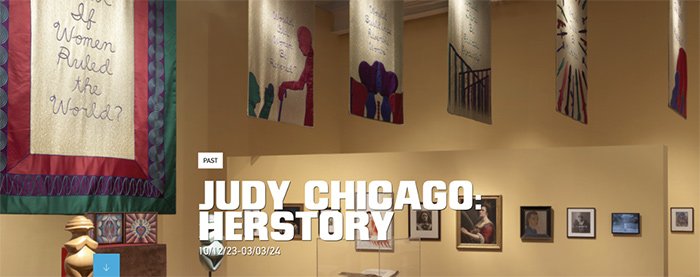
October 12, 2023 – March 3, 2024
She has said, “If you bring Judy Chicago into the museum, you bring women’s history into the museum.” If that may sound like ego-centric hyperbole, in Chicago’s case, it’s pretty much true. The New Museum’s four-floor exhibition spans this renegade feminist’s 60-year career, while shining a floodlight on women artists, writers and activists down the decades. It’s a large-scale show but more importantly, it illustrates that women’s role in the history of art will never again be under the radar.
From her 1960s experiments in Minimalism and her revolutionary feminist art of the 1970s, Chicago expanded her focus to confront environmental disaster, birth and creation, masculinity, and mortality. Readers will recognize her as the creator of The Dinner Party, the first epic feminist artwork that debuted at the San Francisco Museum of Art in 1979 (now housed permanently at the Brooklyn Museum). This massive triangular table of 39 place settings, each representing an historical female figure from Sappho to Sojourner Truth is testament alone to her talent. These vulvic-painted plates were labeled as “porn” and “kitsch” and even rejected by some other feminists of the day. Still, she persisted.
The fourth-floor space is an homage to the rollcall of women who have inspired Chicago. This “City of Ladies” exhibition from Simone de Beauvoir, Hildegard of Bingen, Artemisia Gentileschi, Zora Neale Hurston, Frida Kahlo, Hilma af Klint and Virginia Woolf, among many others, is a gift to all women. It’s a stunning, not-to-be-missed sisterhood.
REMEDIO VARO:
Science Fictions – Chicago Art Institute
By Sandra Bertrand
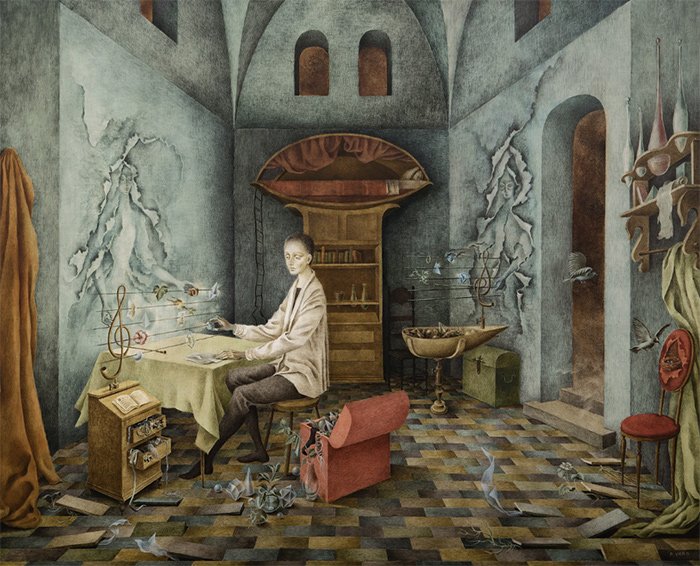
Remedios Varo. Armonía (Harmony), 1956. Collection Eduardo F. Costantini. © 2023 Remedios Varo, Artists Rights Society (ARS), New York / VEGAP, Madrid.
July 28-November 27, 2023
While Remedio Varo became a household name in her adopted homeland of Mexico, she has only recently received growing attention in the U.S. and Europe. Fleeing wartime Europe in 1941, Varo found in Mexico City a fecund creative community of Mexican and European artists. Surrealism, both a burgeoning transformative art movement and a philosophy, captivated this artist. Alchemy, through its parallels to an artist’s creative process, became a perfect fit not only for Varo but for Frida Kahlo and Leonora Carrington in their feminist collaborations. This profound interest in magic, astrology, kabbalah, and tarot often set these women surrealists apart from their male counterparts.
One skeletal construct alludes to a treatise of man as machine, who must be awakened to follow an evolutionary path. To Be Reborn is not only a narrative of rebirth. The occult principle “as above, so below” is evidenced in the crescent moon floating in an earthly chalice. Varo’s famous triptych is here as well, illustrating the arcane powers of young acolytes and their escape into a higher realm. Such images may never be fully understood, but the art speaks volumes.
The drawings, paintings, and sculptures on display that I witnessed had a magnetic pull to Art Institute viewers of all genders and ages. Such provocative, other-worldly images, executed in such intricately beautiful detail are proof of Varo’s mastery of technique. It’s a rare gift, deserving to be included in the pantheon of dreamers and fabulists from Breughel to Ernst, Dali, Chirico, and in particular, Kahlo and Carrington. In paraphrasing Edith St. Vincent Millay, Varo’s candle burns at both ends and it will last the night.



